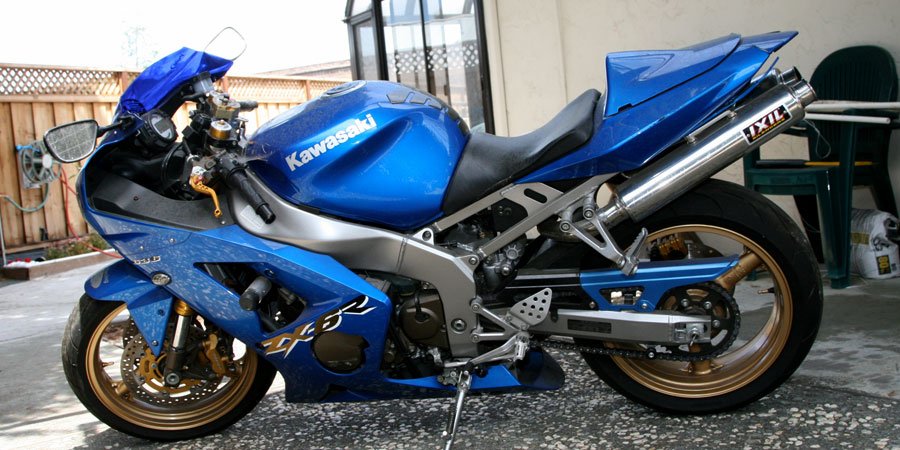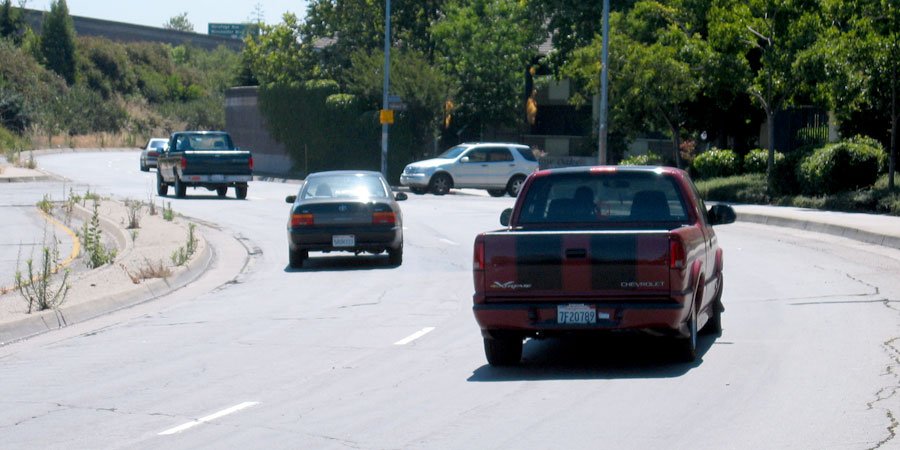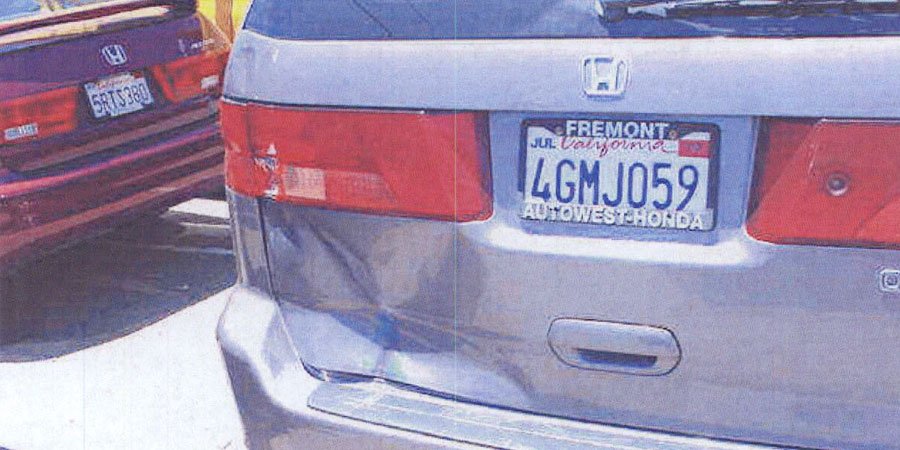George Liu, age 24, a college senior, was driving his Kawasaki motorcycle en route to classes at San Jose State University.

George was on a two-lane road that curved to the left and was following a Ford van. Both the van and the motorcycle were in the left lane.

Ahead of George and the van, a Honda, driven by an 18-year-old, made an illegal U-turn from the far-right lane. The Honda cut off the van and crossed in front of it, forcing an emergency stop.
George, driving behind the van, jammed on his brakes at the unexpected stop. His motorcycle stopped in time to avoid hitting the van. George was thrown head-first over the handlebars into the rear door of the van. His helmet dented the rear of the van.

George hit the ground with the motorcycle on top of him. He could not feel his legs or the hot engine of his motorcycle that burned his leg. He had suffered a burst fracture of the L-1 vertebrae, cutting his spinal cord. George would never walk again.
The Honda driver admitted to the police that he had made a U-turn from the far-right lane. Nonetheless, the San Jose Police Department reported that George was at fault for following too close.
We made a policy limits demand on Allstate to pay its full policy to settle George’s claims. At the time, we did not know the amount of the policy. Whatever the coverage limits, it would never fully pay George for all the damage he had suffered. As a practical matter, George’s only chance was for Allstate to reject the settlement offer and then convince a jury to award George his full damages. That would open the door to a lawsuit against Allstate for bad faith.
The Allstate adjuster knew that George would be in a wheelchair for life. He also knew that the policy limit was $30,000. No doubt intent on saving Allstate from paying its policy, he rejected our policy limits demand and “divined” that George was 80% at fault. I have practice personal injury law for decades. I cannot imagine how anyone could decide that a party was 80% at fault.
The rejection of the offer to settle was great news. It was the first step in proving that Allstate had not engaged in a good faith effort to settle, as required by California’s insurance laws. And it exposed the driver to a judgment over his policy. That would open the door for a lawsuit against Allstate for punitive damages for its misconduct.
Allstate hired local counsel for the Honda driver. In deposition testimony, he claimed the police had misunderstood him. he had made a legal U-turn from the left lane and never cut off the van. His passenger gave the same story.
That made George’s case even better. We could prove that the teenager was grossly negligent and that he readily changed his story. The jury would not like that.
The Friday before trial, Allstate offered $1 million to settle all claims.
That was significant. Finally, we had someone’s attention at Allstate’s headquarters. A senior executive had ordered the payment of “extra-contractual” dollars from Allstate’s treasury. Allstate realized it was in bad faith and risked having to pay punitive damages for its misconduct.
Monday morning, we were assigned to a courtroom for trial. Pre-trial motions were argued, a jury selected, and we gave opening statements. Trial testimony opened with the report of the driver of the van.
She testified that the motorcycle was 50 to 100 feet behind her at a safe speed, about the same as her speed. — in the range of 30 mph.
“Suddenly,” the Honda came from her right, “cut her van off,” forcing her to “jam on her brakes.” Her van came to a complete stop. About 2-3 seconds later, she felt an impact – it was George Liu’s helmet hitting the rear of her van.
At the end of the second day, our mediator called me to report that Allstate had raised its settlement offer to $2 million. We were not interested.
The most convincing evidence we had was a state-of-the-art computer simulation by our accident reconstruction specialist that showed:
- the crash developed over four seconds
- the van blocked George’s view in front of him
- the curve made it impossible for George to see the Honda’s illegal U-turn
- the Honda cut-off the van and forced an emergency stop.
Before trial started on the third day, the mediator reported that Allstate had increased its settlement offer to $3.5 million.
After court on the third day, George and I were preparing his direct testimony for the next day and reviewing our day-in-the life video, when the phone rang. Allstate was now offering $4 million. I told the mediator that $6 million would settle the case and that I knew he had more authority. I abruptly hung up. The mediator called me back and confessed that he had $4.5, but if I wanted more I would have to take it away from Allstate. I said “fine” and ended the call.
After a spirited discussion with George that I will never forget, George told me he would take the $4.5 offer.
On the fourth day of trial in open court, George Liu agreed to settle his claims for $4.5 million. We never learned what the original adjuster had to say about this decision.
Listen to George’s heart-breaking account of the events in his own words.
Here are the lessons to be learned from this case study.
- Do not accept at face value a police officer’s conclusions.
- The goal of a policy limits demand letter is not to settle the claim but to trigger a rejection and provide the opportunity to collect above and beyond the policy limits.
- Anyone with a claim should understand that their most valuable right is to make a policy limits demand. Avoid piecemeal discussions with adjusters.
- Draft a demand that meets the requirements of a good faith offer to settle so that insurance coverage counsel will agree that it was a mistake not to accept the settlement offer.
- Demand the policy even when you do not know the limits. The reality is that in most cases, with exceptions, the policy is all that is available to satisfy the claim.
- Give a deserving client the chance to fully collect for their loss.
- Get a second opinion to determine if the carrier is in bad faith for rejecting a policy limits demand. That will allow you to try the case without second-guessing if you have made the right decision.
- Keep settlement discussions going after trial has started. The settlement offer will probably change after you put on your best evidence.
- When there is “good money” on the table, take the win.

“We don’t handle cases . . . . We represent people.” ®
ALEXANDER LAW GROUP, LLP
99 Almaden Blvd, Suite 700 , San Jose 95113
408.289.1776



